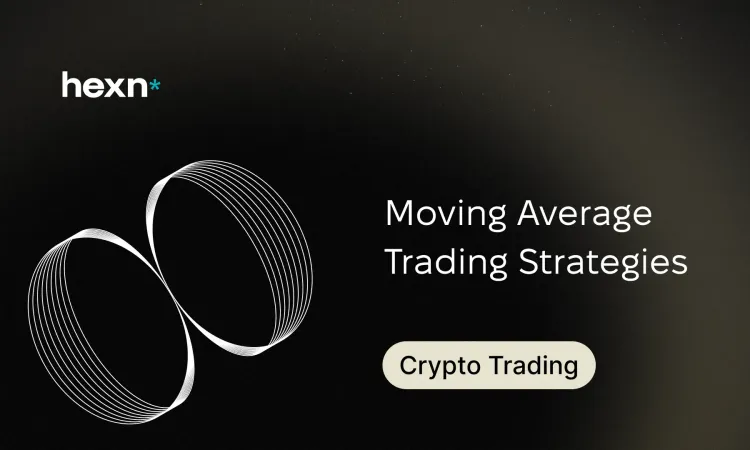Moving Average Trading Strategies
Moving averages are simple tools that smooth price data to reveal underlying trends. Traders use them to read momentum, time entries and exits, and spot possible reversals. This guide explains common moving-average-based approaches and how they can improve trade decision-making.
Quick Takeaways
- Trend direction: Moving averages reveal whether an asset is generally rising or falling.
- Crossovers and patterns: Interactions between different moving averages can signal potential buys or sells.
- Context matters: These tools work best when combined with volatility measures, price structure, or fundamental insight.
Why Moving Averages Are Useful for Reading Markets
By averaging past prices over a chosen period, moving averages reduce short-term noise and make persistent moves easier to spot. Shorter-period averages react faster to recent price changes, while longer-period averages smooth out swings. Comparing multiple averages helps traders judge momentum and whether a trend is strengthening or fading.
Double Moving Average Crossover
The double moving average crossover uses two averages of different lengths, typically one short and one long. A common setup compares a faster average to a slower one—for example, a 50-period vs. a 200-period average. When the short average moves above the long average, it often marks a potential uptrend; when it falls below, it can indicate a downtrend.
Crossovers give clear, rule-based signals, but they lag price because averages reflect past data. Traders may add filters—like volume confirmation or support/resistance—to reduce false signals in choppy markets.
Moving Average Ribbon
A moving average ribbon layers several averages of increasing lengths (for example, 20, 50, 100, 200). The ribbon shows how aligned short- and long-term price action is. When the lines spread apart in the direction of price movement, the trend is likely gaining momentum. When they compress and overlap, the market may be consolidating or preparing for a reversal.
Ribbons are useful to visualize trend health and to avoid trading against a strong move. They can also highlight periods when the trend is weakening.
Moving Average Envelopes
Moving average envelopes place upper and lower bands at a fixed percentage above and below a central moving average. Traders choose the percentage based on how volatile the market is—narrower bands for calmer markets, wider bands for more volatile assets. When price crosses an envelope band it can indicate a short-term overbought or oversold condition.
How Envelopes Differ from Bollinger Bands
Envelopes use fixed percentage offsets from the moving average. In contrast, Bollinger Bands set bands based on standard deviation, so the distance adapts to changing volatility. Envelopes give simple threshold signals, while Bollinger Bands also show volatility expansion or contraction as the bands widen or narrow.
MACD: Combining Moving Averages to Track Momentum
The MACD (Moving Average Convergence Divergence) builds on moving averages by subtracting a longer-period average from a shorter one and plotting a signal line, plus a histogram. Traders watch crossovers between the MACD line and its signal line, and they scan for divergences between MACD and price. Such divergences—when indicator highs/lows don’t match price highs/lows—can hint at weakening momentum and possible reversals.
MACD blends trend-following and momentum analysis, making it a versatile tool when paired with price action or trend filters.
Practical Tips for Applying Moving Average Strategies
- Adjust timeframes: Match average lengths to your trading horizon—shorter for intraday, longer for swing or position trading.
- Combine signals: Use moving averages with volume, support/resistance, or volatility indicators to confirm entries and exits.
- Mind the lag: Moving averages are reactive, not predictive—expect delayed signals and manage risk accordingly.
- Backtest and refine: Test parameter choices on historical data before committing capital.
How to Manage Risk When Using Moving Averages
Moving-average-based rules can produce false signals in sideways markets. Limit risk with stop orders, position sizing, and by avoiding trades that conflict with a higher-timeframe trend. Treat moving averages as one input among several, not as a standalone guarantee.
Final Thoughts
Moving averages are a straightforward way to interpret price behavior and momentum. Different setups—from simple crossovers to ribbons and envelopes—offer varied perspectives on trend strength and market extremes. Use them thoughtfully, combine them with other tools, and always plan for risk to turn these indicators into practical trading aids.
